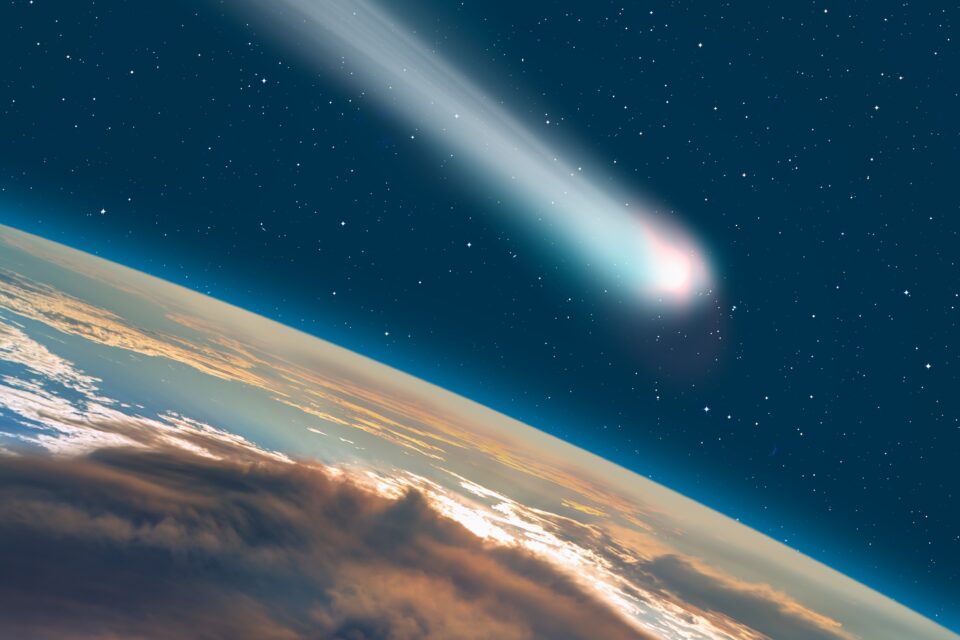A visable cryovocanic comet to pass by earth in April 2024
Posted By RichC on October 20, 2023
At first glance, a comet THREE TIMES the size of Mount Everest speeding towards earth is enough to get my attention. After a little more reading about this “horned” cryovolcanic comet … it will supposedly pass us by without incident. Whew.
That said, it will pass close enough to earth next year (closest point on April 21, 2024) to be visable by the naked eye. I’m sure by then we will be hearing a bit more about it and at least I will be doing my best to look up when the night sky is clear. Mark your calendar.
More about cryovolcanic comets
Cryovolcanism, a fascinating geological phenomenon, refers to the eruption of volatiles such as water, methane, or ammonia instead of molten rock. When this occurs on comets, such as with 12p/Pons-Brooks discussed above, it leads to spectacular space vistas and offers unique insights into these celestial objects.
Cryovolcanic comets, while not as commonly discussed as their traditional counterparts, play a pivotal role in our ongoing exploration and understanding of the solar system’s outer realms.
Formation of cryovolcanic comets
As discussed previously, cryovolcanic comets originate in the cold outer regions of the solar system, where temperatures are low enough for volatile compounds to freeze. These comets harbor mixtures of water ice, ammonia, methane, and other frozen gases alongside dust and rock particles.
The exciting discovery of cryovolcanism on comets owes much to the advancements in space exploration technology. High-resolution imaging and spectral analysis from missions like NASA’s Deep Impact have allowed scientists to observe these icy eruptions in detail.
Unraveling the cryovolcanic process
The cryovolcanism observed on comets is a process governed by both internal and external factors. As a cryovolcanic comet approaches the Sun, solar heating causes its surface temperature to rise. This heat penetrates the comet’s crust, causing the frozen volatiles beneath to sublimate. The pressure from these gasified materials builds up until it cracks the surface, spewing gas and icy particles into space, creating a miniature version of volcanic eruptions seen on Earth.
The expelled material forms a cloudy envelope known as a coma around the comet’s nucleus, and solar radiation pressure shapes it into the beautiful tails characteristic of comets. These dynamic and dramatic events transform the comet’s physical structure, sometimes reforming its surface with each orbit around the Sun.
Cryovolcanic comets are cosmic labs
Cryovolcanic comets serve as cosmic laboratories, offering a glimpse into the early solar system’s conditions. The volatile compounds released during cryovolcanic eruptions are primordial in nature, preserved in the comet’s icy heart since the solar system’s formation.
Analyzing these materials helps scientists understand the building blocks of solar systems and potentially uncover whether comets played a role in delivering life-sustaining water and organic compounds to Earth.

Comments